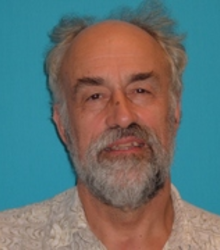
Don Crabb
Ph.D., 1967, Southampton
Professor Emeritus
Experimental Nuclear and Particle Physics
Research Interests
Prof. Crabb´s research, conducted with colleague Prof. Day, is based on the development of polarized nucleon targets for particle scattering experiments carried out at major research laboratories such as SLAC, CERN and TJNAF. The research at the Physics Department includes the use of high field superconducting magnets and low temperature evaporation and dilution refrigerators, together with high frequency microwave systems and low power NMR techniques. The study of the properties of polarizable materials, such as ammonia and lithium deuteride has led to precise measurements of the very small deuteron polarization signal. The materials under study have to be doped with paramagnetic radicals, either by chemical means, or by irradiation. The irradiation of our target materials has taken place at several low energy accelerator facilities around North America and has led to proton and deuteron polarizations of 95% and 42%, respectively, in ammonia. The more difficult problem of establishing lithium deuteride as a polarized target material for new scattering experiments was successfully pursued and used in experiments E155 and E155X at SLAC. Prof. Crabb has been active in experiments which have used polarized electron beams (E143, E155, E155X at SLAC) and polarized muon beams (NA47 at CERN). All used polarized targets to probe the spin structure of the proton and neutron and have made significant contributions to the understanding of this puzzle. Other recent experiments that have used UVa polarized targets were run at TJNAF and will continue over the next two years. Further experiments are envisaged at SLAC which will use polarized photon beams together with a different style polarized target beingdeveloped at UVa.
Honors
APS Fellow [2009]
For his contributions to the use of high field polarized targets and development of high polarization and radiation resistant polarized target materials and his role in using them in seminal particle physics experiments and advancing the knowledge of the behavior in high intensity beams.
 Physics at Virginia
Physics at Virginia